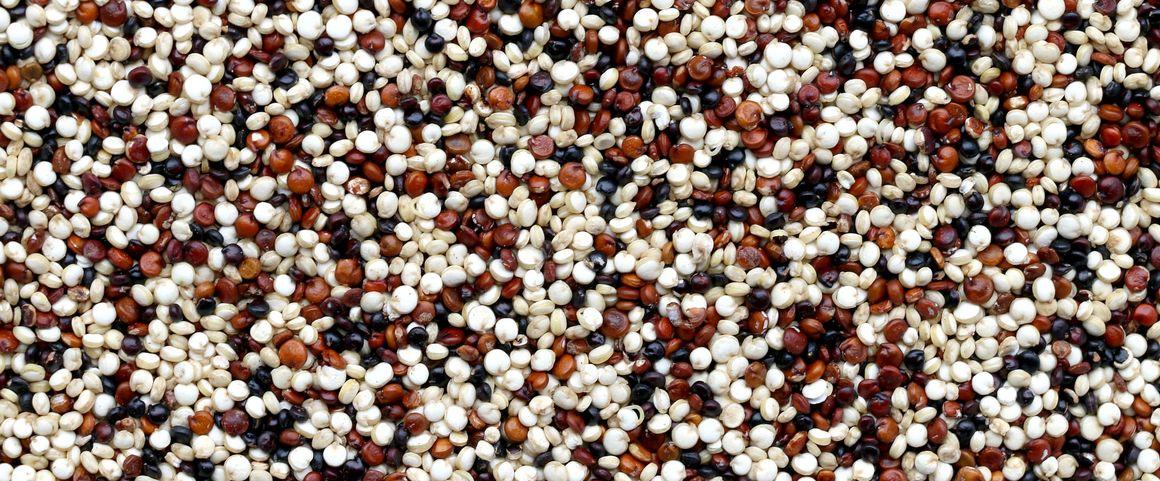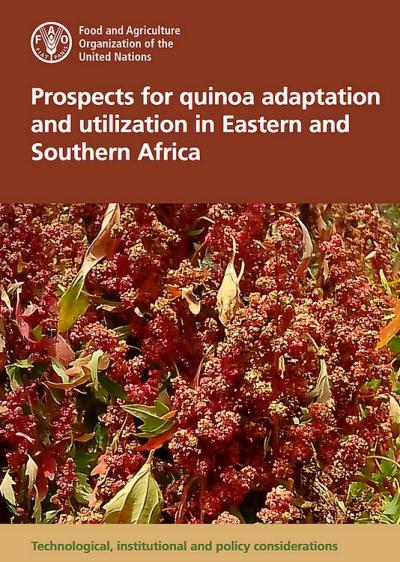Just out 3 November 2025
- Home
- CIRAD news
- News
- Prospects for quinoa in Eastern and Southern Africa
Prospects for quinoa adaptation and utilization in Eastern and Southern Africa

In a few decades the very high nutritional value of quinoa has placed this plant among the major crops for the world diet © P. Bamin, Unsplash
Faced with the challenge of increasing the production of quality food to feed the world’s population within the context of climate change, quinoa offers an alternative for many countries suffering from food insecurity. In Africa, quinoa (Chenopodium quinoa Willd.) is an emerging crop with great potential to contribute to local food and nutrition security. Its increased popularity in the last few years is attributed to the success of the International Year of Quinoa (IYQ2013).
The Food and Agriculture Organization (FAO), which championed IYQ2013, has worked since then with developing countries in Africa, which are grappling with food and nutrition insecurity, to introduce and promote cultivation of quinoa.
In 2014-2015, FAO implemented a project entitled “Technical Assistance for the Strengthening of the Food System of Quinoa”, coordinated by CIRAD’s Didier Bazile, who was a visiting scientist and global focal point for quinoa at FAO in Rome at the time (2014-2016). The project was designed to support the institutional capacities of seven countries – Djibouti, Ethiopia, Kenya, Somalia, South Sudan, Uganda, and Zambia – in the production, evaluation, management, utilization and marketing of quinoa in diverse farming systems and agroecological zones. Quinoa evaluation trials that were conducted across multiple sites in the participating countries served as pilot adaptability studies for the crop.
This book, which results from the project, presents the key technological, institutional and policy considerations for the successful introduction, adaptation and utilization of quinoa in Africa:
- developing local varieties adapted to specific ecological regions or zones and ensuring optimum seed quality;
- adapting fertilizer applications to soil nutrient status in each environment;
- bringing NARIs, agricultural universities and NGOs on board to promote and support quinoa production;
- raising awareness of quinoa as a food crop with high potential to contribute to national food and nutrition security.
This work is the result of a highly collaborative effort among technical experts at the FAO Subregional Office for Eastern Africa, the Ministries of Agriculture and agricultural research institutions in the seven project-implementing countries, as well as the International Center for Tropical Agriculture (CIAT) and CIRAD.
The book is available as a free e-book or in hard copy form.
Maliro, M.F.A., Abang, M.M., Mukankusi, C., Lung’aho, M., Fenta, B., Wanderi, S., Kapa, R., Okiro, O.A., Koma, E., Mwaba, C., Isse, M.M. and Bazile, D. 2021. Prospects for quinoa adaptation and utilization in Eastern and Southern Africa: Technological, institutional and policy considerations. Addis Ababa, FAO. https://doi.org/10.4060/cb2351en




























